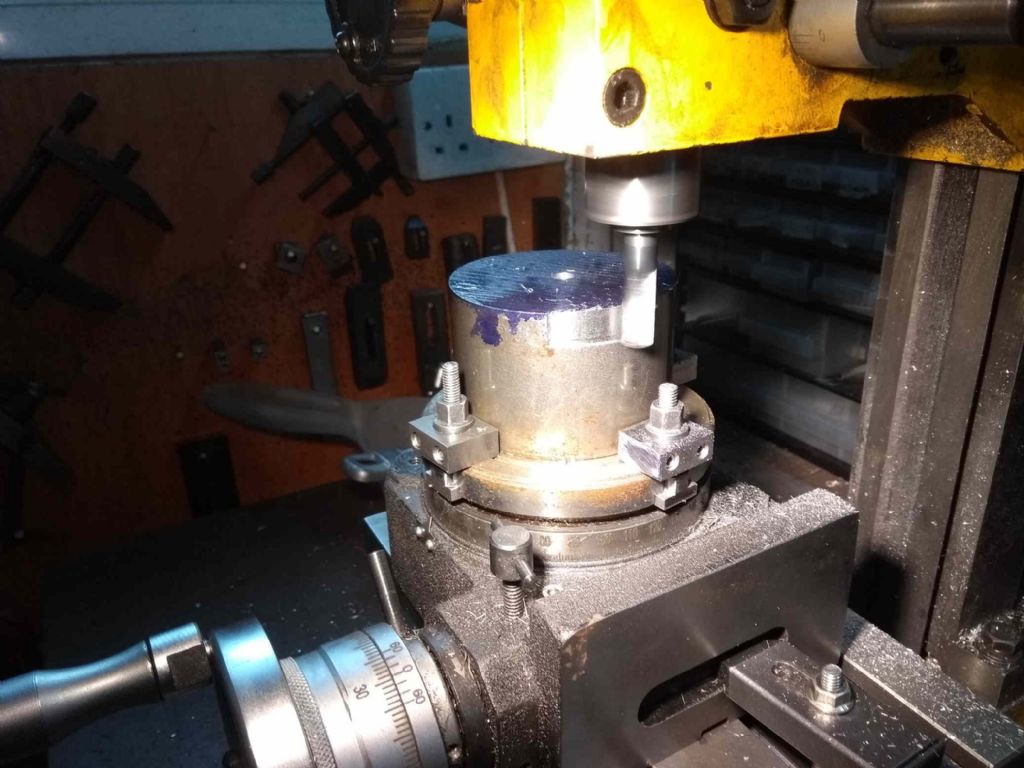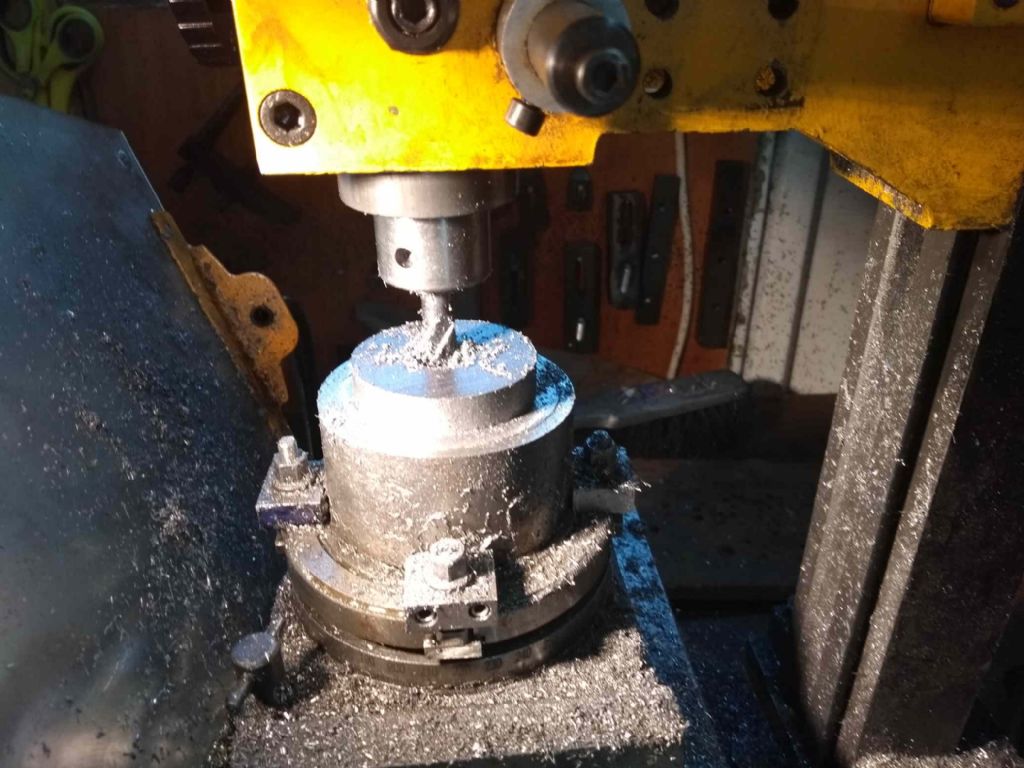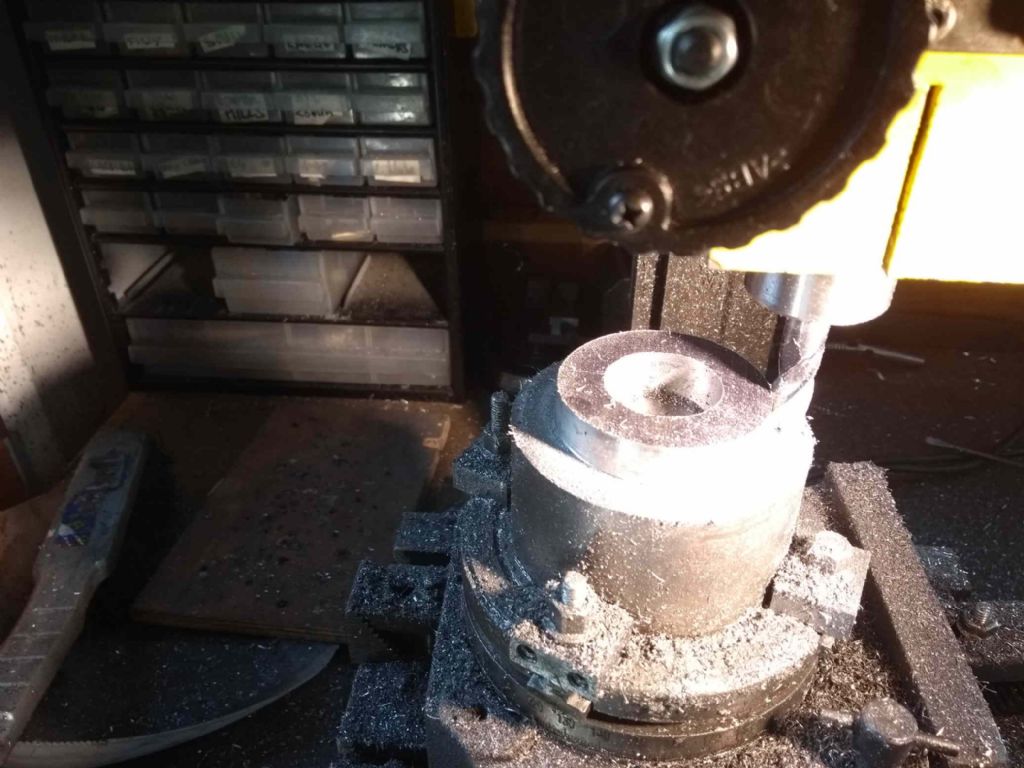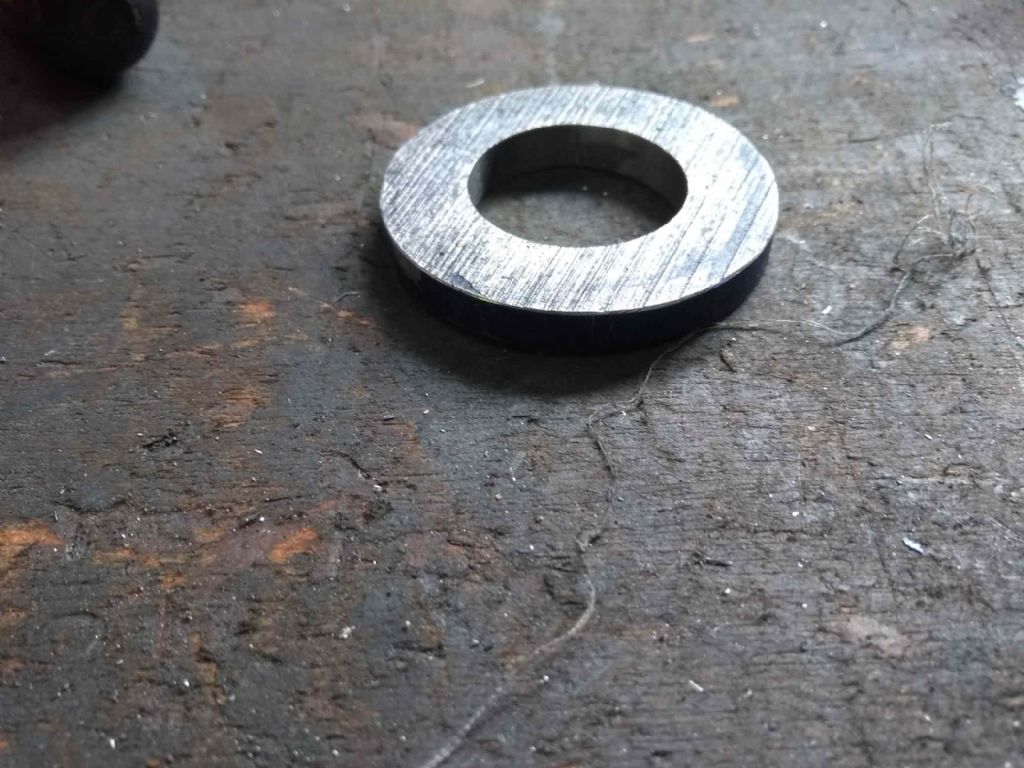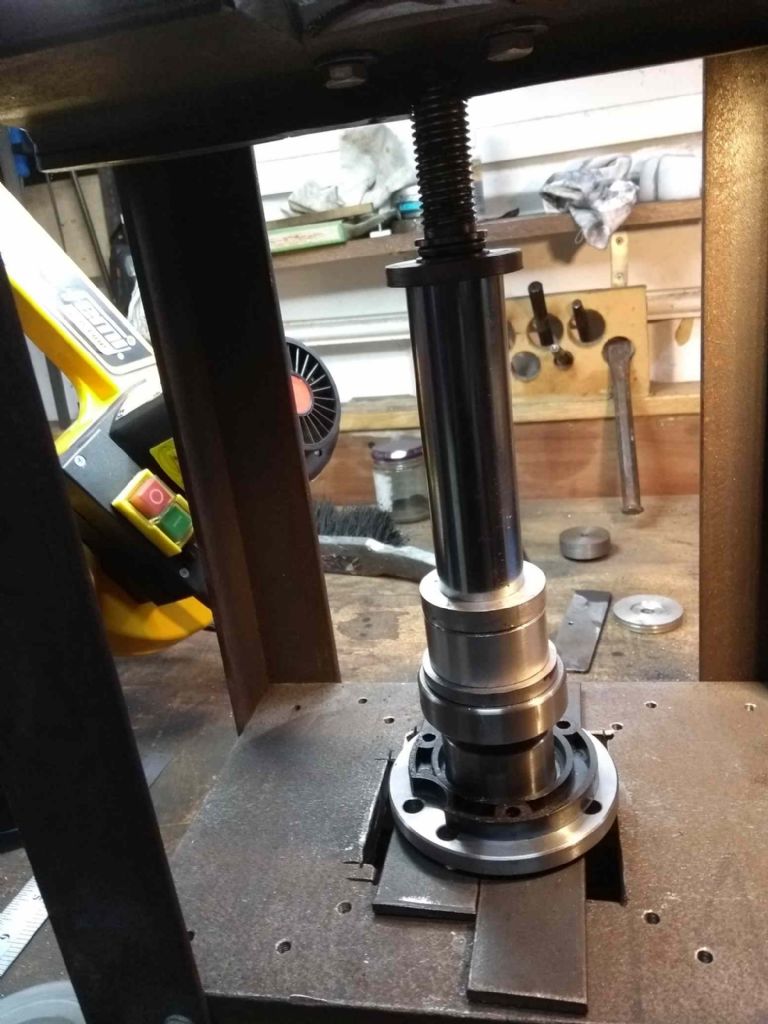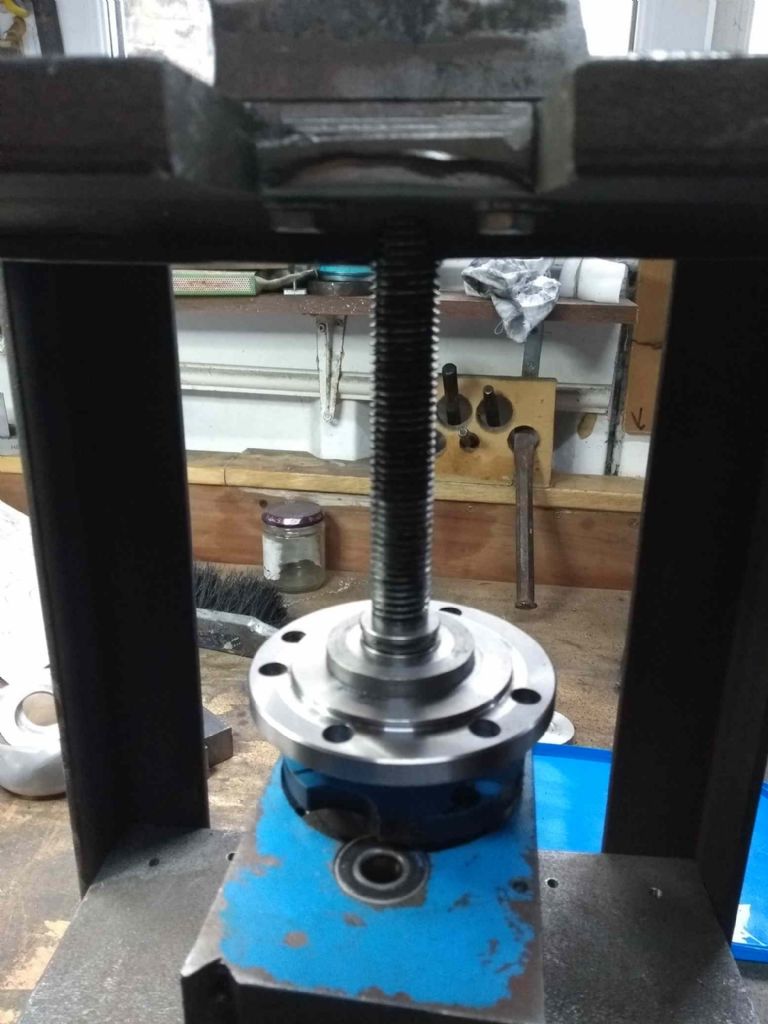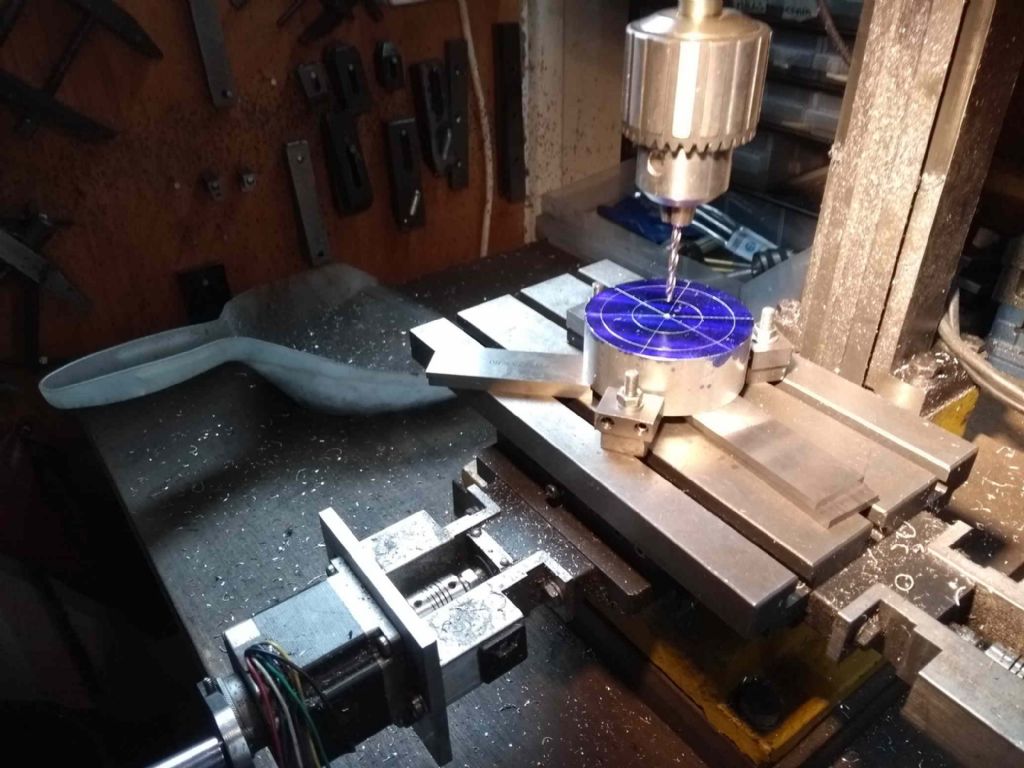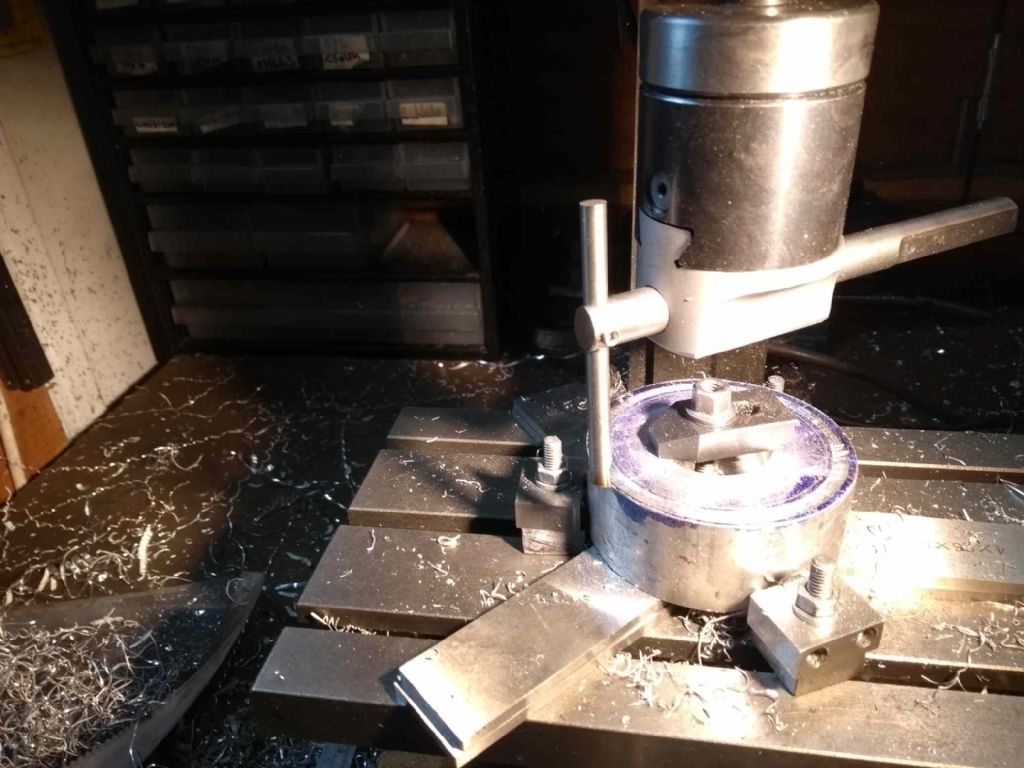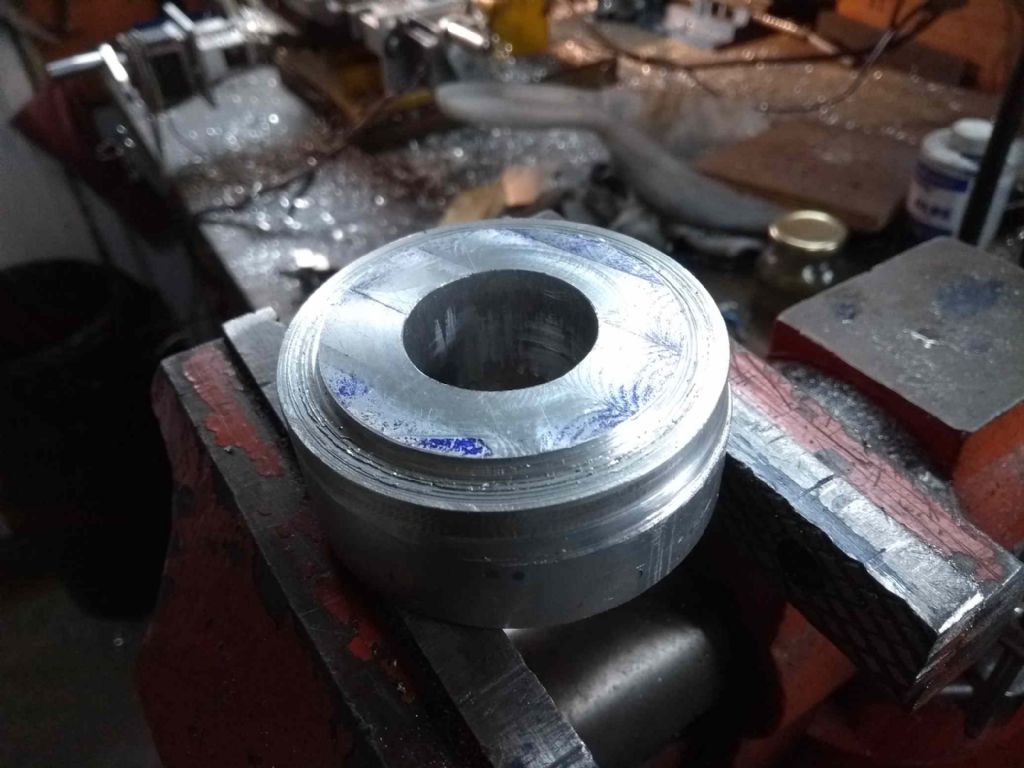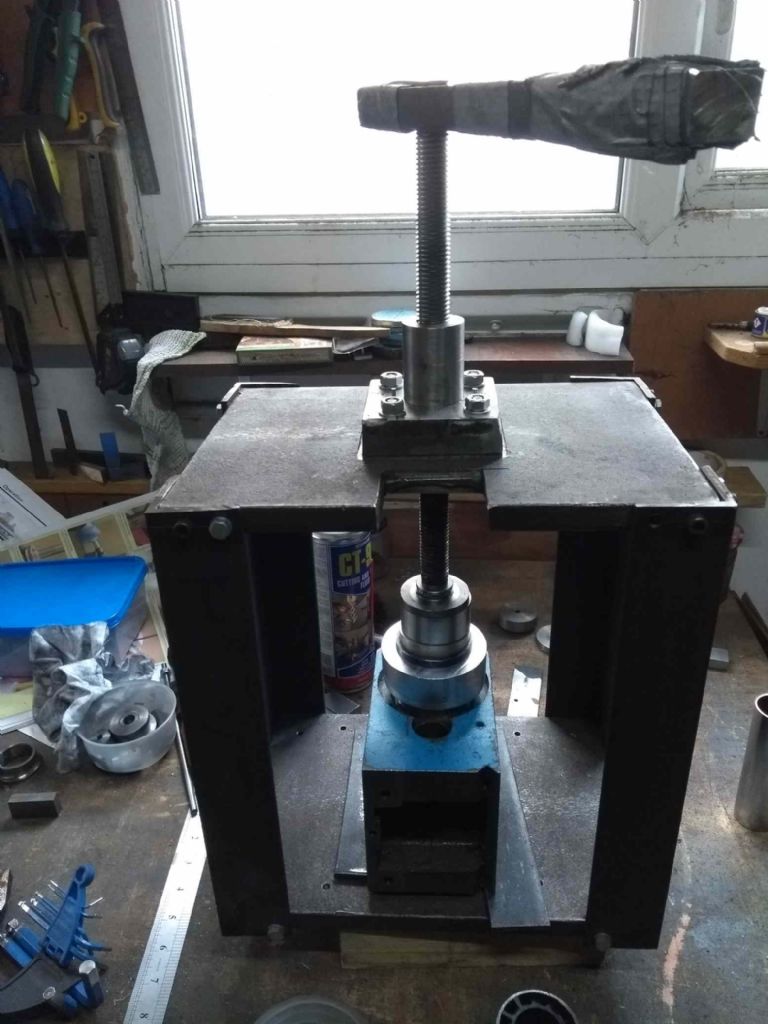Well it's been 40 days in the wilderness, but I've finally made some progress.
In advance, I can tell you that the take-away is that you should NEVER take your lathe apart unless you have a working lathe!
The first thing to do was to make a piece to press out the bearing that I'd pressed in. No lathe you see, so I had to do some lathing on my tiny mill. I decided to do this with a rotary table.
The outside

The Inside

Unpleasantly the clamps shifted (several times) during the work, so I ended up by milling the outside again.

How do you part off on the milling machine, I hear you say? Perhaps, a slitting saw?
Nope, my trusty new bandsaw! result is.

The piece fitted passably well

And have pressed the bearing on to the spindle, pressed the spindle into the headstock.

It was at this point that I realised that I needed a similar washer to press the rear bearing in, if I was not to risk damaging the damn thing. I reached for my lathe…. Oh, dear! It's in bits.
Back to the trusty milling machine. This time I decided that life was a little too short for rotary tables and slipping clamps. So out came my boring head. A challenge this time was that the bit of aluminium I had that was wide enough was deeper than the Z movement on the mill by a few mm. I in the end I bored to that depth and then remove the last bit with chain drilling and a file.
Drilling the innards, before boring out to 30 mm

. Again the clamps didn't hold well, so I went back to holding down with some normal clamps and switching to a clamp through the centre for the outside

My first attempt at this used a standard boring bar, but running backwards. This wasn't a good idea as the only real effect was to unscrew the boring bar head from the mandrel.
So I took a boring bar I made earlier and made a sort of trepanning tool (above). As the piece had moved before I'd finished the middle it was no longer aligned as you might be able to see from the photo.

Not a piece I'm awfully proud of, but it did the job!

And the bearing pressed home nicely!
The question on your lips, of course, is, 'has it made a difference?'
The answer is a definite *yes*. Firstly, there is no longer any lateral movement from the chuck under load. Secondly, it runs noticeably quieter. And thirdly, it seems to be producing significantly better surface finish in my limited tests so far!
With this all done now, I feel re-energised – back in from the wilderness and will get back to the steam engine…
As usual my thanks to all on this thread who've offered advice and support!
Iain
old mart.


